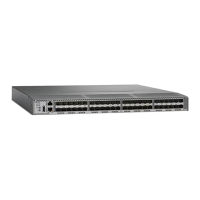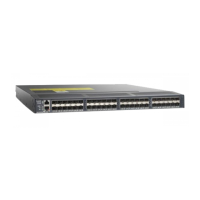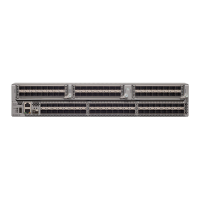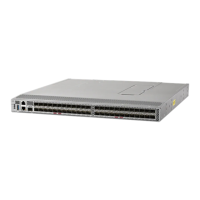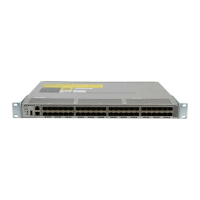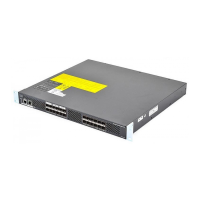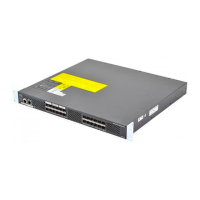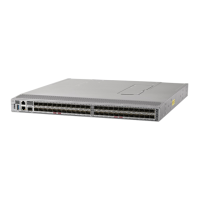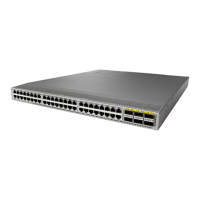Send comments to mdsfeedback-doc@cisco.com.
3-25
Cisco MDS 9000 Family Troubleshooting Guide
OL-5183-02, Cisco MDS SAN-OS Release 1.3
Chapter 3 Troubleshooting Switch Level Issues and Interswitch Connectivity
Troubleshooting Hardware Problems
Troubleshooting Hardware Problems
If you suspect a hardware issue with a LC, please start with the following commands after you attach to
the LC:
1. show process exceptionlog
Most hardware errors are logged here. If the 'ErrType' field indicates anything other than
WARNING, then it is most likely a hardware failure.
2. Error statistics under the show hardware internal commands
Some error statistics reported under FC-MAC are not necessarily errors, but those counters normally
don't increment for a port which is in an UP state.
3. Interrupt counts under show hardware internal
Note that:
–
Some interrupts are not necessarily error interrupts.
–
Some interrupts have threshold before the corresponding ports are declared as bad. Don’t
conclude that the hardware is bad because of some interrupt counts. However, these commands
are useful for developers when debugging the problems.
–
Some interrupt counts may show up under UP-XBAR and DOWN-XBAR ASICs, when one of
Supervisors is pulled out or restarted.
Using Port Debug Commands
In case of any port-related problems, a command has been added to MDS SAN-OS version 1.3(4) that
allows you to get all the information from a module. The command is:
show hardware internal debug-info interface fc <module>/<port>
You can get similar information from earlier versions of SAN-OS using other commands. This section
lists those commands.
Examples of when to use these commands include:
• An FC port fails to move to the UP state after a link failure, admin-up operation, new connection,
etc.
• Unexpected link flap(s)
• The port moves to “error disabled” state
Maintain a set of information for the module before these problems occur (if possible) and then gather
another set of information after these problems occur.
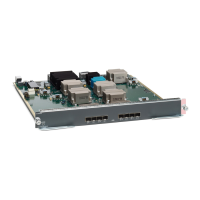
